Subscriber Exclusive
Yarn Lab: A Fine Line
Elisabeth gravitated to the finer yarns offered by Silk City Fibers when planning her samples for this Yarn Lab.
Elisabeth gravitated to the finer yarns offered by Silk City Fibers when planning her samples for this Yarn Lab. <a href="https://handwovenmagazine.com/yarn-lab-a-fine-line/">Continue reading.</a>
https://handwovenmagazine.com/cdn-cgi/image/format=auto/https://www.datocms-assets.com/75077/1656681387-yarn-lab-a-fine-line-1.jpg?auto=format&w=900
When I received sample cards from Silk City Fibers, I immediately gravitated to the mouthwatering array of fine yarns in natural fibers. I figured that the gorgeous plumpy and textured yarns that are plentiful on Silk City’s site have an army of knitters poised to make them into beautiful knitted items, but the fine Linen 14, Nature’s Way 2/30 Merino, and Wool Crepe Deluxe 80/20 were calling for weavers to make the most of them.
I wove all the samples on an eight-shaft loom. I handwashed the samples in warm water, rolled them in a towel to remove excess water, and then laid them flat to dry. The only samples that needed pressing were the pure linen samples.
THE YARNS
Linen 14: (100% linen, 7,000 yd/lb), 31 colorways.
This lustrous, fine linen comes in a wide range of colors and makes a sturdy warp when sett tightly.
Nature’s Way 2/30 Merino: (100% mulesing-free ultrafine merino, 7,500 yd/lb), 10 colorways.
I loved the opportunity to work with “mulesing-free” merino. The movement to pay close attention to how our yarns are made, their impact on the environment, and the treatment of our beloved fiber animals is close to my heart. If you are not familiar with the term, mulesing is the removal of strips of skin from around the backsides of lambs to create scar tissue that has been thought to prevent fly-strike. The current understanding is that it is a cruel practice, and it has been banned in several countries.
SUBSCRIBER EXCLUSIVE
When I received sample cards from Silk City Fibers, I immediately gravitated to the mouthwatering array of fine yarns in natural fibers. I figured that the gorgeous plumpy and textured yarns that are plentiful on Silk City’s site have an army of knitters poised to make them into beautiful knitted items, but the fine Linen 14, Nature’s Way 2/30 Merino, and Wool Crepe Deluxe 80/20 were calling for weavers to make the most of them.
I wove all the samples on an eight-shaft loom. I handwashed the samples in warm water, rolled them in a towel to remove excess water, and then laid them flat to dry. The only samples that needed pressing were the pure linen samples.
THE YARNS
Linen 14: (100% linen, 7,000 yd/lb), 31 colorways.
This lustrous, fine linen comes in a wide range of colors and makes a sturdy warp when sett tightly.
Nature’s Way 2/30 Merino: (100% mulesing-free ultrafine merino, 7,500 yd/lb), 10 colorways.
I loved the opportunity to work with “mulesing-free” merino. The movement to pay close attention to how our yarns are made, their impact on the environment, and the treatment of our beloved fiber animals is close to my heart. If you are not familiar with the term, mulesing is the removal of strips of skin from around the backsides of lambs to create scar tissue that has been thought to prevent fly-strike. The current understanding is that it is a cruel practice, and it has been banned in several countries.
[PAYWALL]
Wool Crepe Deluxe 80/20: (80% merino/20% viscose, 2,100 yd/lb), 30 colorways.
The Wool Crepe Deluxe is an absolute joy to weave with: textural, sturdy, and with a light, but very pleasant, spongy hand off the loom.
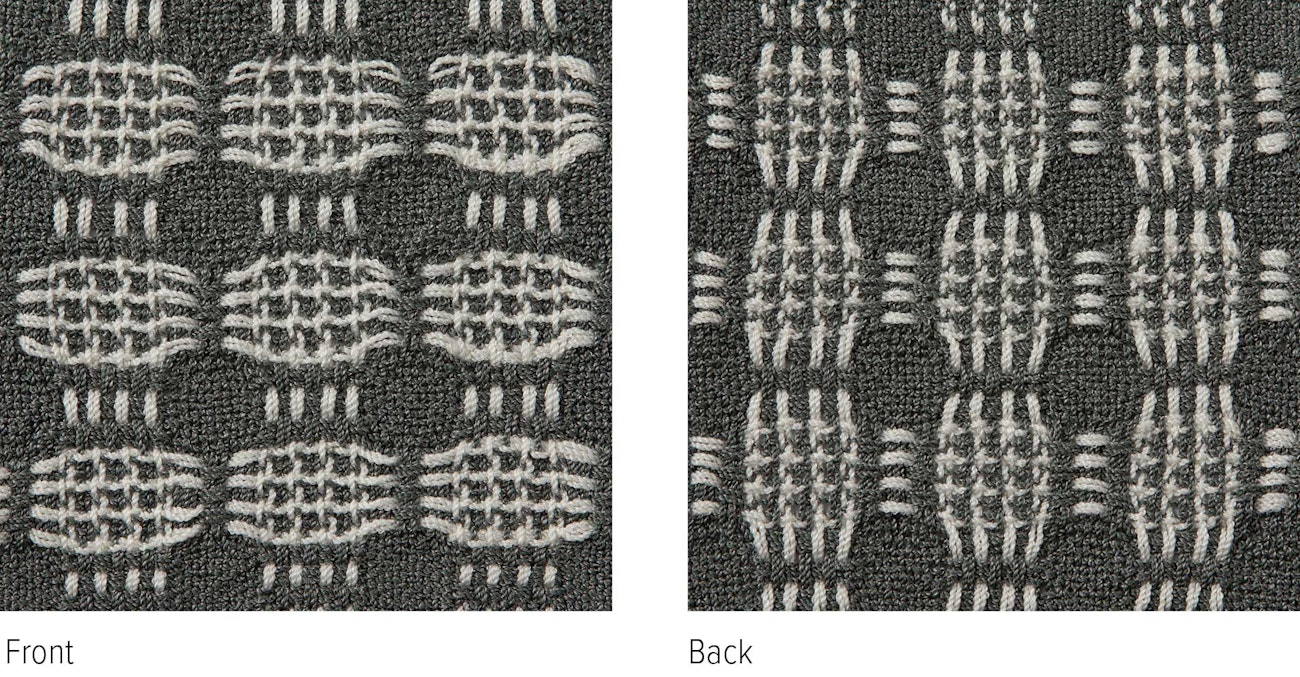
Deflected doubleweave
Deflected doubleweave
Warp and Weft: Wool Crepe Deluxe, #114 Fisherman, #300 Mushroom.
Setts: 15 epi; 15 ppi.
Shrinkage in width: 20%.
Shrinkage in length: 23%.
I found the sett of 15 epi was difficult to beat to square in deflected doubleweave—I had to use a very tentative beat. Even so, the fabric has a light, springy hand that might be perfect for a tunic or a wrap for cool evenings.
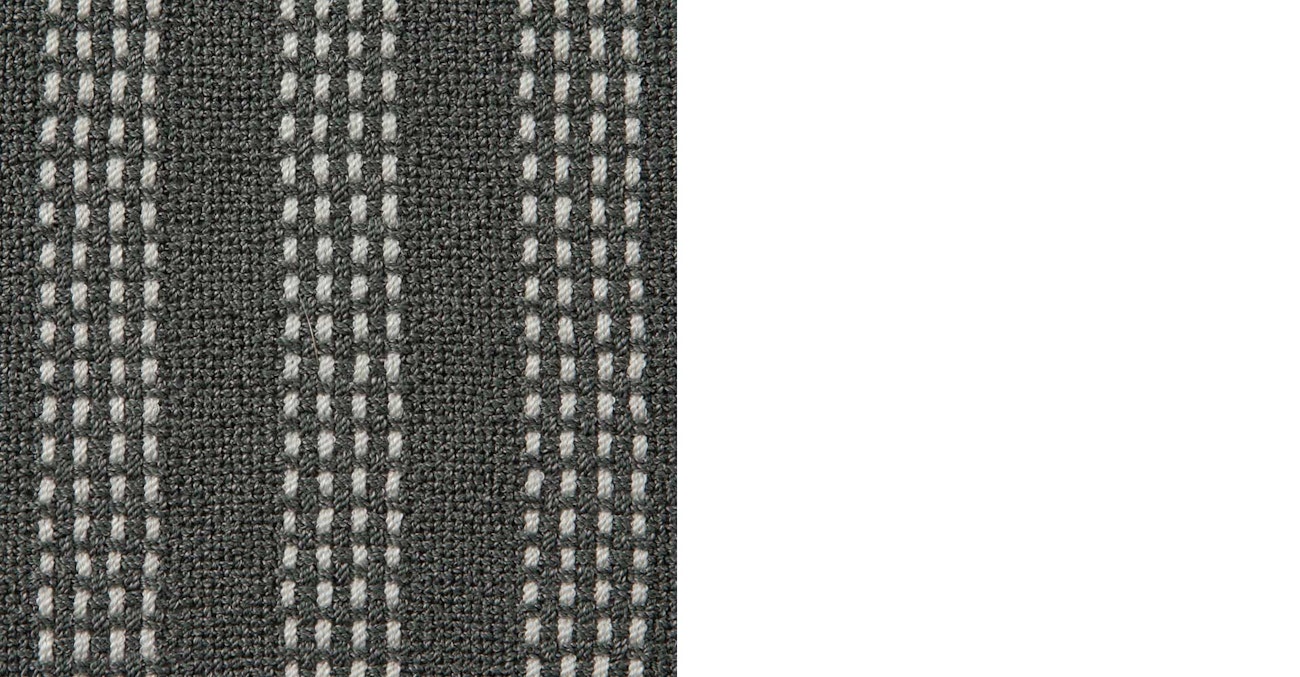
Plain weave with warp floats
Plain weave with warp floats
Warp and Weft: Wool Crepe Deluxe, #114 Fisherman, #300 Mushroom.
Setts: 15 epi; 15 ppi.
Shrinkage in width: 16%.
Shrinkage in length: 16%.
The light springiness of this fabric and its resistance to wrinkles makes me think of garments for warm spring days or the start of school. This sample looks the same on both sides.
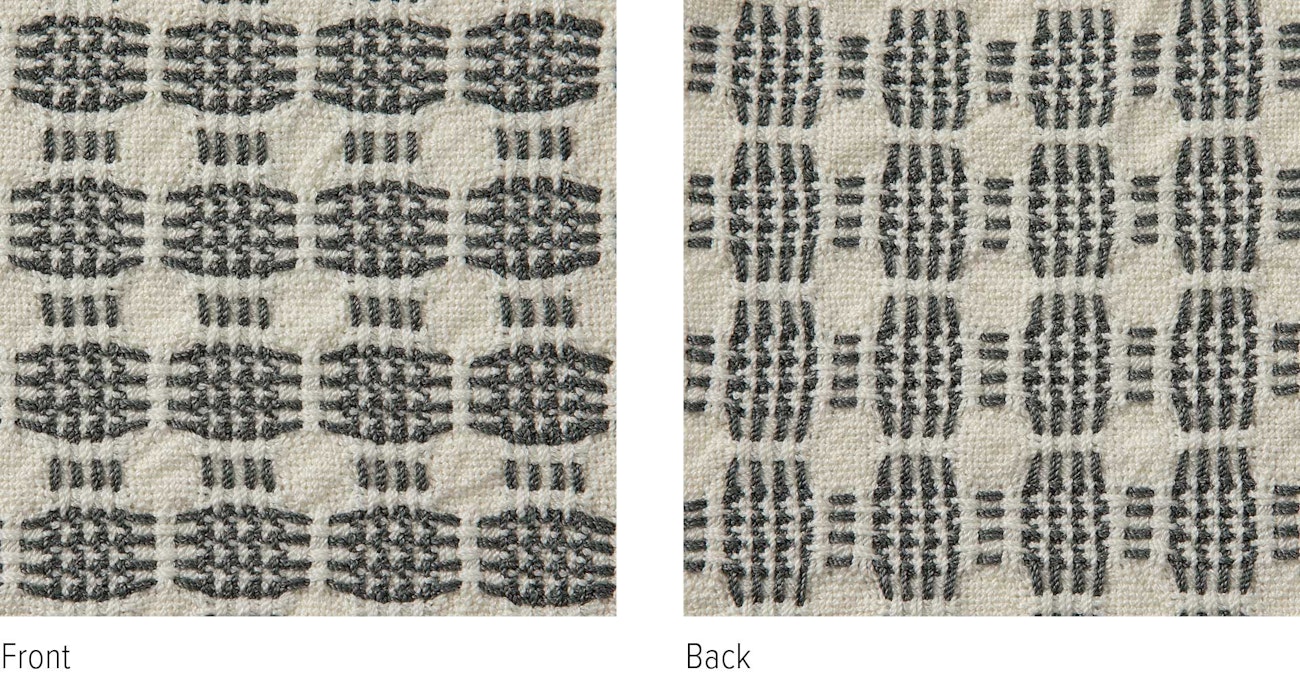
Deflected doubleweave
Deflected doubleweave
Warp and Weft: Wool Crepe Deluxe, #114 Fisherman, #300 Mushroom.
Setts: 20 epi; 20 ppi.
Shrinkage in width: 15%.
Shrinkage in length: 15%.
I changed the sett for this and the next two samples from 15 epi to 20 and found it much easier to maintain my beat. The fabric, while slightly firmer, still has the wonderful flex and spring of the samples sett at 15 epi.
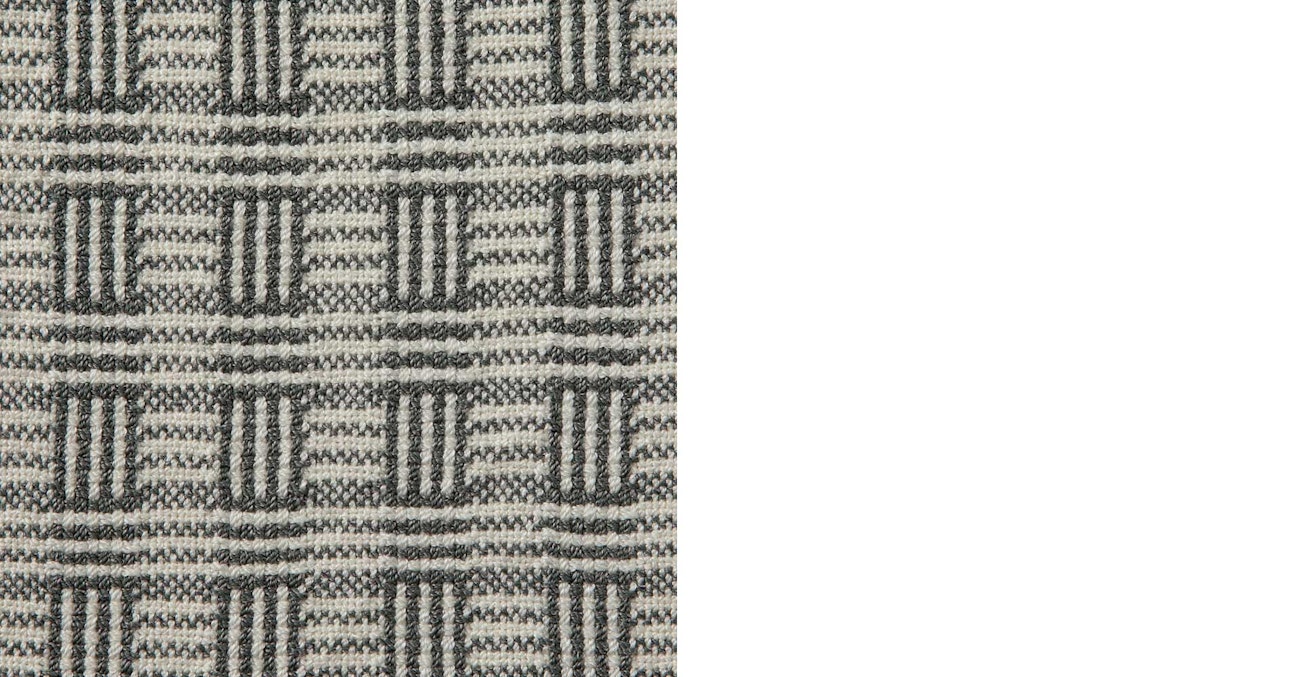
Plain weave with color-and-weave
Plain weave with color-and-weave
Warp and Weft: Wool Crepe Deluxe, #114 Fisherman, #300 Mushroom.
Setts: 20 epi; 20 ppi.
Shrinkage in width: 15%.
Shrinkage in length: 17%.
The tighter sett in plain weave yielded a firm cloth with textural interest and a lot of spring along the bias. This sample looks the same on front and back.

Deflected doubleweave
Deflected doubleweave
Warp and Weft: Wool Crepe Deluxe, #114 Fisherman, #300 Mushroom.
Setts: 20 epi; 20 ppi.
Shrinkage in width: 19%.
Shrinkage in length: 19%.
Using this yarn with a float-rich interlacement is great. The sample is drapable and stretchy, while popping right back into shape after being handled roughly.
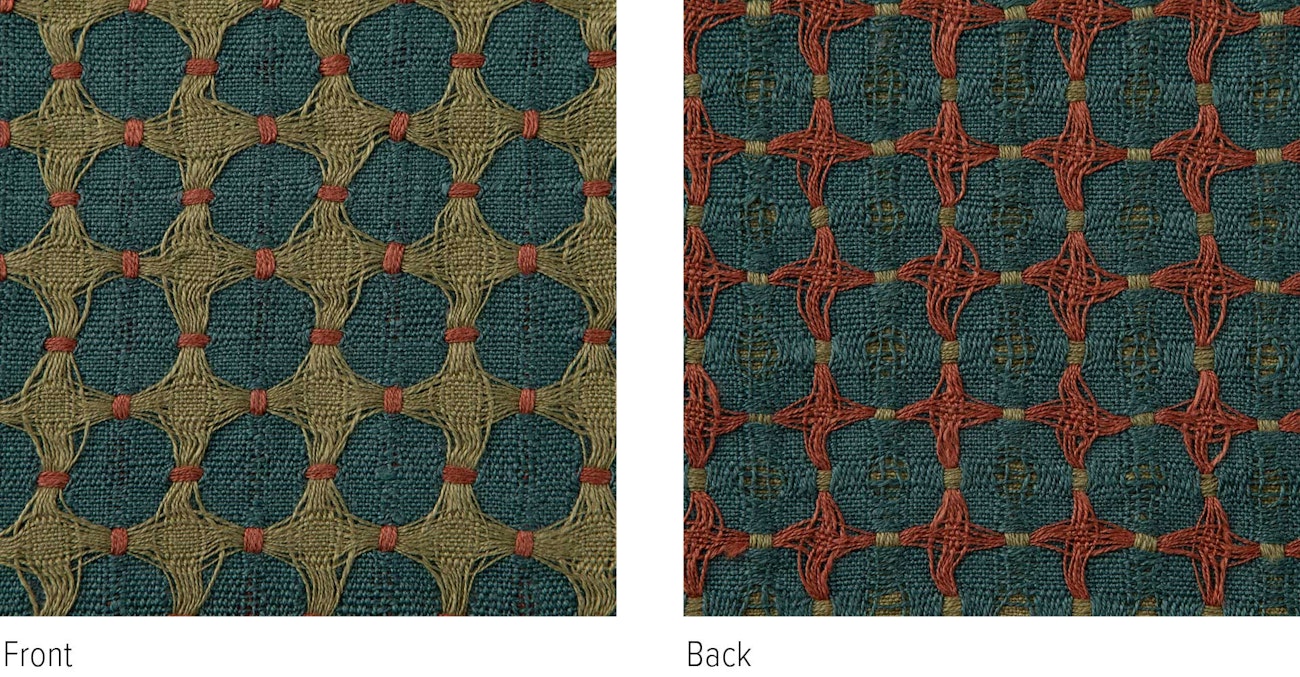
Deflected doubleweave
Deflected doubleweave
Warp and Weft: Linen 14, #014 Teal, #045 Olive, #151 Penny.
Setts: 48 epi; 48 ppi.
Shrinkage in width: 8%.
Shrinkage in length: 9%.
I wove this sample and the sample below using only linen for warp and weft. Varying the treadling created two very different fabrics, both of which had interesting reverse sides.
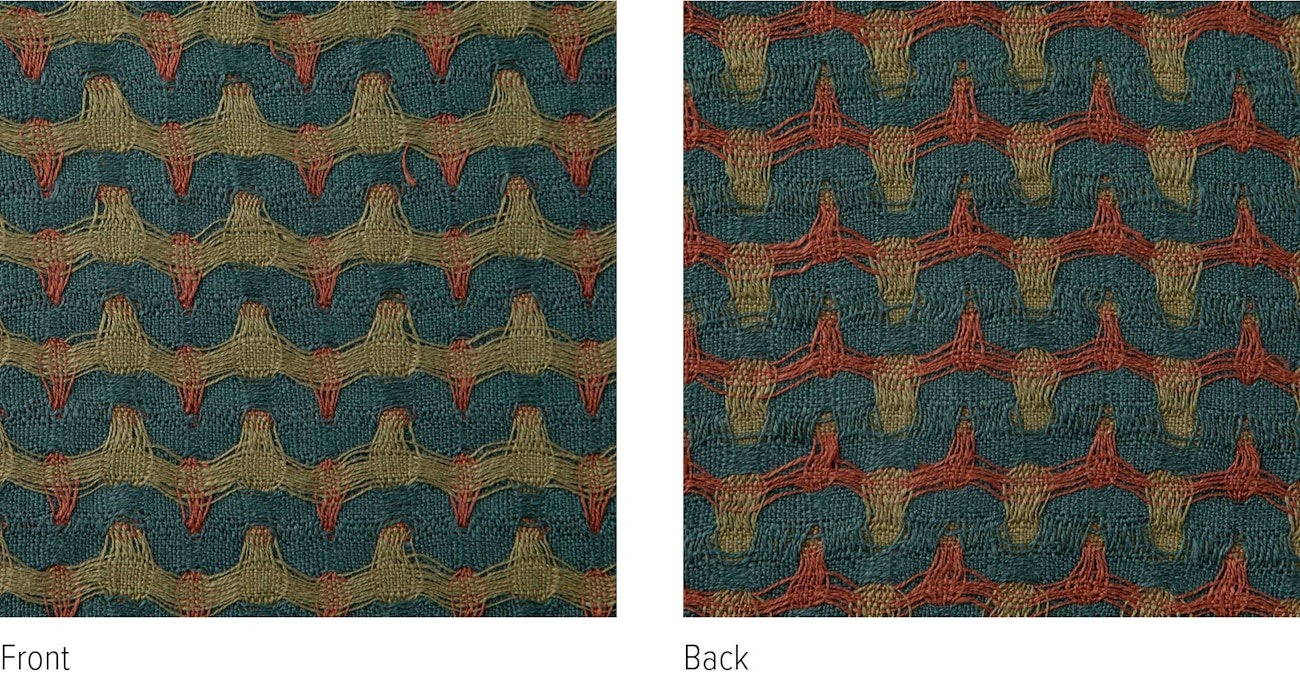
Deflected doubleweave
Deflected doubleweave
Warp and Weft: Linen 14, #014 Teal, #045 Olive, #151 Penny.
Setts: 48 epi; 45 ppi.
Shrinkage in width: 8%.
Shrinkage in length: 7%.
The fine linen, sett close but let loose in a float-rich structure such as deflected double-weave, creates a delicate and flexible fabric that could be used for table linens or shirt fabric. I pressed both of these samples on a linen setting to bring out the shine of the linen.
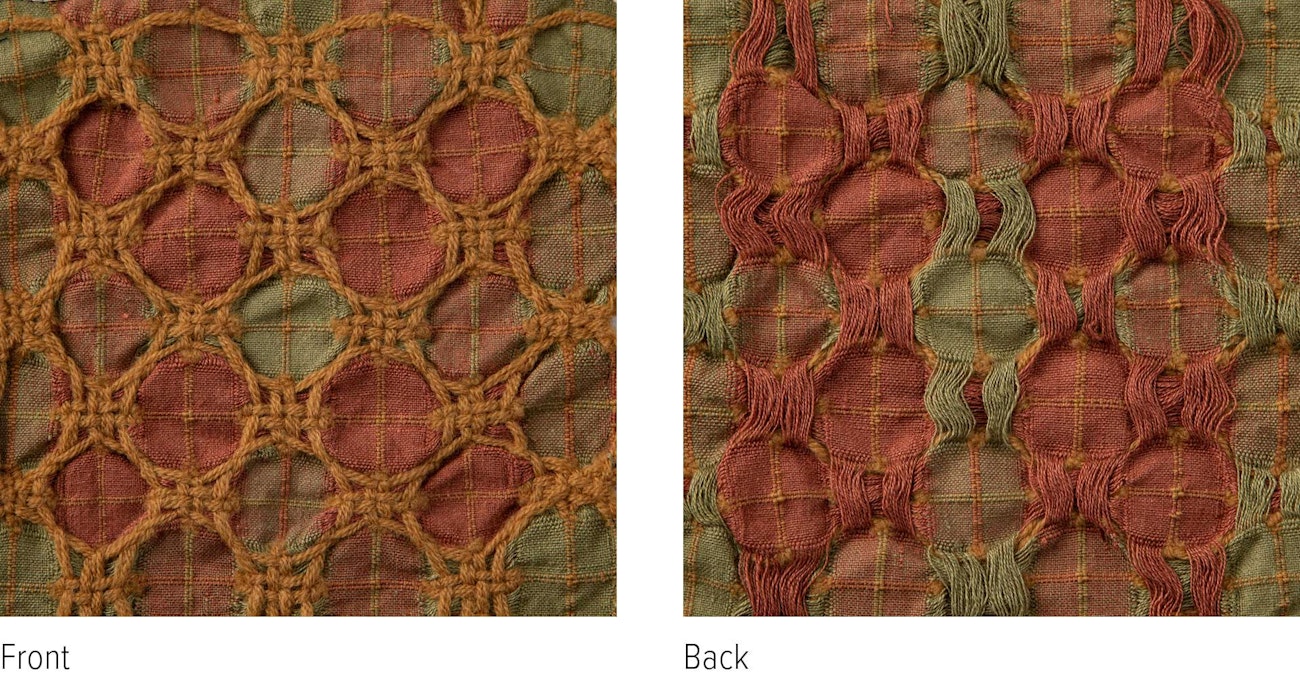
Honeycomb variation
Honeycomb variation
Warp and Weft: Linen 14, #045 Olive, #151 Penny; Silk City Nature’s Way Merino, Camel.
Setts: Working epi, 44. Linen 14, 48 epi; 44 ppi (used singly); Nature’s Way Merino, 24 epi with 4 threads used as 1 end (2 ends [8 threads]/dent), 44 ppi (used quadrupled).
Shrinkage in width: 17%.
Shrinkage in length: 17%.
The tight sett of the linen combined with the soft fulling of the merino work together to create a highly textured fabric. The fabric is not reversible; the long floats on the back are unattractive, but the cloth would make wonderful cushions or lined objects that hide the back.
Final thoughts
Working with these fine yarns was inspiring to say the least (there are quite a few more samples, structures, and combos that I liked but are not shown here). I found the linen to be very easy to work with, and the only time I had breakage was when I tried to weave plain weave on the dense sett meant for the deflecting structures. At a more relaxed sett, it wove up like a dream. I hadn’t woven with wool crepe previously, and I feel like I have a new friend. It has the lively springiness of singles without the (sometimes) temperamental behavior. Nature’s Way Merino is lovely and soft in addition to being produced more humanely. Even though it is thin at 7,500 yards per pound, I used four ends as one and got the equivalent of a fingering-weight yarn to use alongside the slender linen.









